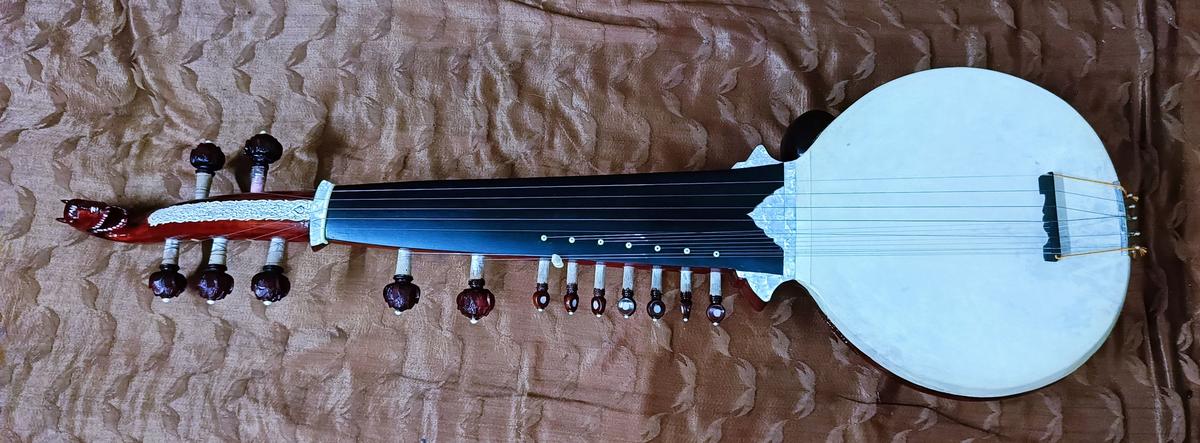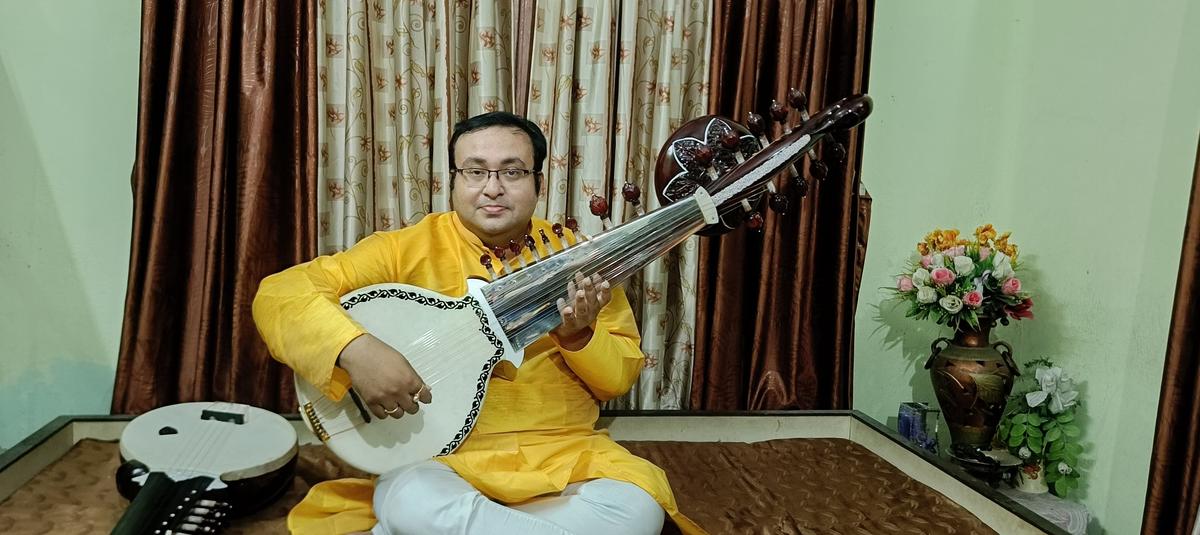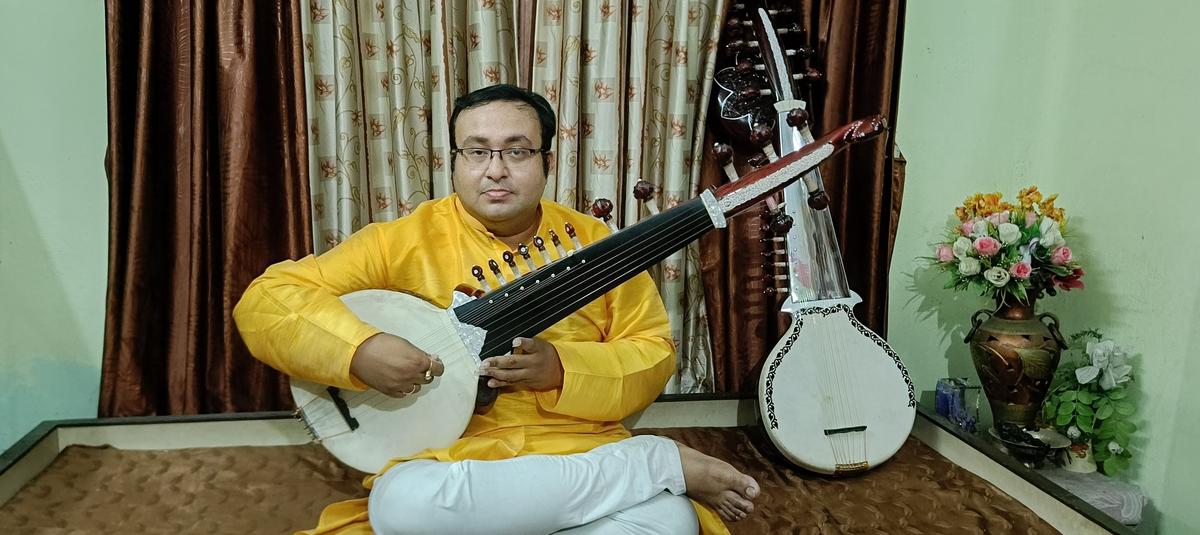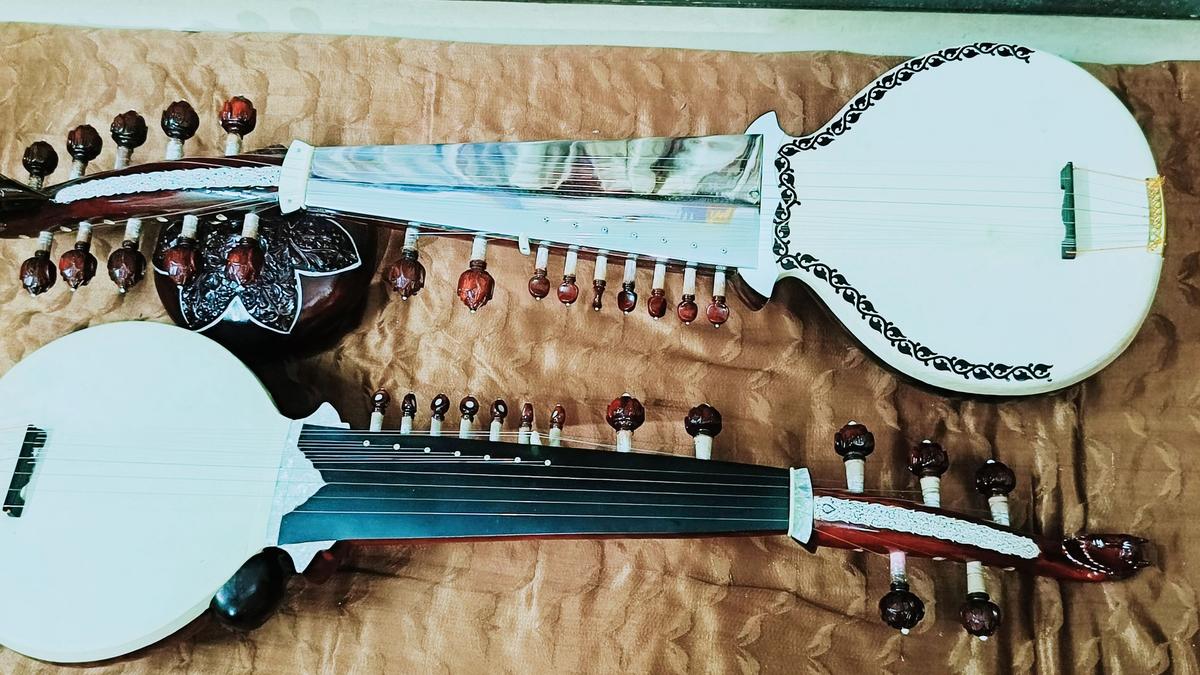India is known for its rich cultural diversity and enduring traditions, the most fascinating aspect of which is the ancient and varied musical heritage, which includes a wide range of musical instruments. From the sitar or violin to the mridangam or tabla, many of these instruments have been passed down through generations and have significantly shaped the country’s unique musical landscape. Over time, some ancient instruments disappeared from the music scene.
But musician Joydeep Mukherjee is trying to revive such instruments, to bring them back to life for modern listeners. The instruments that Joydeep has recently revived include the 16th century Tanseni Rabab and the 19th century Sur-Rabab. Joydeep had earlier revived two ancient string instruments – Mohan Veena and Sursingar – which date back to the 18th century.
After Prithviraj Chauhan lost the Battle of Tarain in 1192, many Afghani soldiers during the Mamluk dynasty tried to take refuge in India. They brought with them the Afghani rabab, which is still played as a folk instrument in many parts of Pakistan and Afghanistan today. Over time, Indian musicians started playing Indian ragas using this Middle Eastern instrument. In the 16th century, Miyan Tansen developed a special type of large rabab for dhrupad music – called the dhrupad rabab or seni rabab. After his death, it was named the Tanseni rabab. “Still, it continued as a royal stage instrument for the next 250 years until the sursingar was introduced by one of his descendants, Ustad Zafar Khan, in the 18th century. Gradually, the Tanseni rabab faded from the classical music scene,” said Joydeep.
During the 1880s, Ustad Abdullah Khan of the Senia Shahjahanpur gharana combined three instruments – the sursingar, the sarod, and the Tanseni rabab – to create the concept of sur-rabab in Bengal.
Carrying the legacy forward
The reviving Sur-Rabaab. | Photo Credit: Special Arrangement
During the 19th century, the sursingar was at its peak as a musical instrument, while the sarod was played mostly by rabab players. Though the sur-rabab was popular, it was damaged during Abdullah Khan’s all-India musical tour in 1910. The following year, he made a second sur-rabab at Harendra Nath Sil’s workshop in Calcutta and gave it to his son Ustad Mohammed Amir Khan. “In 1933, Amir Khan gave it to his disciple Pandit Radhika Mohan Maitreya before his death. After him, the instrument passed on to Somjit Dasgupta, managing trustee of the Pandit Radhika Mohan Maitreya Memorial Trust,” said Joydeep Mukherjee.
To create modern versions of traditional instruments, Joydeep first had to understand their physical structure and gauge their sound quality. His decade-long experience in the revival of extinct instruments helped him. He read books, studied instruments in various museums and then designed their revivals. From analysing what material should be used, and what wood would be suitable, what kind of strings can give better tone and how the sound should be produced, Joydeep explains the process.

A revised version of Tanseni-Rabab by Joydeep Mukherjee. | Photo courtesy: Special Arrangement
A new lease of life
While ebony wood bridge was used instead of ivory for both instruments, Joydeep Mukherjee replaced catgut strings with bronze and copper strings for the Tanseni Rabab. He retained its wooden fretboard and used rosewood for better sound. For the Sur-Rabab, he used a century-old seasoned mahogany woodblock to keep it light with a deep tone quality. “The peacock head was created for ornamentation as well as to express the symbolism of India’s national bird, Saraswati, and Krishna,” he said.
Joydeep also added chikaris and sympathetic strings for more resonance. He then worked out a blueprint in collaboration with his instrument maker, who lives in rural Bengal. “The next few months were spent on trial and error, testing potential instruments, cutting, making sound boxes, shaping and creating sample sounds with dummy structures,” he says.

Jaideep Mukherjee playing the sur-rabab. | Photo courtesy: Special Arrangement
When the design of the instruments was completed and finalised, Joydeep needed recordings of the old masters to get an idea of their original sound and tone quality and sought help from Prasar Bharati CEO Gaurav Dwivedi, who was the special guest on India’s 75th Republic Day this year, to get some archival audio and video of these instruments. Mukherjee also released some documentaries and recordings from the Doordarshan archives, such as Mohan Veena: An OriginApart from this, Sangeet Natak Akademi also shared some videos which helped in the process.

Joydeep Mukherjee playing the Tanseni Rabab. | Photo Credit: Special Arrangement
Despite being a sarod player, Joydeep has also mastered several other instruments such as sitar, surbahar, Mohan veena, sursingar and several rababs. The Sangeet Natak Akademi awarded him the Ustad Bismillah Khan Award for Sursingar and Sarod in 2019.
Last year, Prime Minister Narendra Modi not only praised Jaideep for reviving the Sursingar but also invited him to play it during the 98th edition of ‘Mann Ki Baat’.
